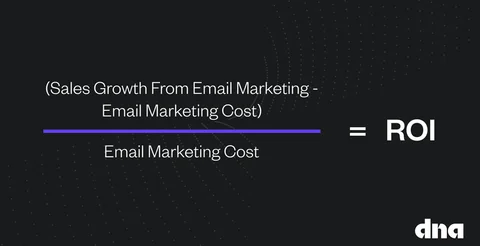In Review: Litmus’ Annual Survey of the Email Landscape 2023

Litmus, a leading email platform provider, has released the first part of its Annual Survey of the Email Landscape. The survey, which collects feedback from hundreds of marketers worldwide, aims to deliver a snapshot of email marketing globally. The results will be delivered in four parts and the most recent, Workflows, explores the different stages involved in creating an email including bottlenecks, automation and how to calculate the return on investment (ROI) of an email.
What do marketers think about marketing emails?
The vast majority of those surveyed feel that email marketing is either critical or very critical to their success. While not likely to be a favourite marketing channel of those in the sector, it is undeniably one of the most effective as it works hard and is more likely to deliver as you are speaking directly to an engaged subscriber.
But if it is such a critical channel then why isn’t it more frequently or more widely adopted? The problem seems to be around marketing email workflow and the length of time it can take to get feedback and stakeholder buy-in.
What causes bottlenecks in email marketing?
According to the survey, 62% of people say it takes up to two weeks to get an email built, scheduled and sent. Not ideal when you want to react to the latest overnight trend or prompt a last-minute flurry of sales to hit your monthly target.
Other barriers reported related directly to production and included delays in receiving feedback or quality assurance. A further 32% report struggling to get buy-in from internal stakeholders. Content creation is something else that causes problems, with 44% of those surveyed saying that they build two or three versions of every email and 18% building four to six versions!
The key takeaway seems to be that everyone agrees on the benefits of emails, but they simply don’t have the resources, or perhaps even the organisational culture, to support them. Day-to-day operations prevent efficient workflows and the humble email is likely to be the first thing to go.
We understand that our clients are busy people and something like email marketing can appear very low down the list of priorities. This is why we establish clear objectives that are unique to each organisation. This includes introducing a content plan and, where appropriate, automation. Then, with a good plan and robust internal quality assurance, all that is usually needed is a quick client review and client sign-off. We’re great at creating high-quality, effective email campaigns for our clients and ensuring they get emails out of the door!

Automation can alleviate some of the workload when it comes to email marketing
Email automation features heavily in the report as is to be expected; after all automated emails often produce some quick wins and reduce workload. The types of email journeys marketers are automating include:
- Welcome journeys
- Post-purchase emails
- Birthdays or other milestones
- Subscriber re-engagement emails
Onboarding or welcome emails are by far the most popular as they’re relatively simple to set up, they’re low-cost and, in reality, are generally something that customers have come to expect in the digital sphere. Overall though, despite the clear benefits of automation only 55% of those using email marketing have automated onboarding sequences. If this is the case for your organisation, we’d highly recommend looking into it and it is definitely something that we can help you with!
Does email marketing really have a good ROI?
The consensus is still very much yes, email marketing has a good return on investment but you can’t fully establish this without a clear understanding of your email KPIs. If it’s your goal to increase sales then the calculation is relatively simple: establish the cost of your emails and subtract this from the sales growth that can be attributed to email marketing. Then divide the cost by your email marketing cost.

But remember, the goal is not always the sale. You might want to encourage customer retention, keep your recipients engaged and informed about your organisation or nurture leads. Ultimately, understanding your ROI will come down to being clear on what your objective is and who your audience is. The advice from Litmus is to expand the way you think about measuring ROI.
Our interpretation of this is that you need to try and quantify the wider benefits:
- What value does being able to target and personalise your messages add?
- How does it help build relationships with customers, keeping you at the forefront of their minds?
- How much time could you be saving with automation and how much happier would your team be with more time to focus on strategic tasks?
- How valuable are the insights that you gather from the sort of precise tracking that comes with email marketing?
When we start to reframe our understanding of ROI, we see an entirely different picture. Email marketing-related costs are relatively low, particularly when we compare them to more traditional methods such as direct mail and print advertising.
If you’d like to know more about effective email marketing, why not take a look at my article Tried and tested techniques for email marketing?
Our team can help you build on your current email marketing activity or even start from scratch! Take a closer look at our services.